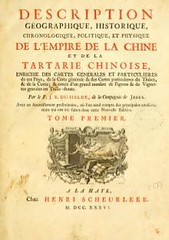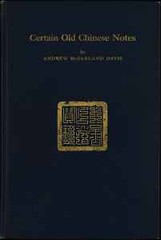
PREV ARTICLE
NEXT ARTICLE
FULL ISSUE
PREV FULL ISSUE
AN UPDATE ON MING DYNASTY NOTES
In August, David Hill of the American Numismatic Society published a great piece on the ANS Pocket Change blog about the world's oldest surviving paper money, the Ming dynasty notes from China. On October 19, 2015 he published a fascinating update with a numisamtic literature connection.
-Editor
Recently on Pocket Change I wrote about Chinese Ming paper notes. Afterward, I was pleased to hear from an expert on the subject, Bruce Smith, who has been studying Chinese coins and paper money for forty years. Most of the information he conveyed comes from a talk he gave at the Chicago International Coin Festival in April 2013.
Unfortunately, according to Bruce, the Chinese book on which it is based is a fraud. “All of the notes listed and illustrated in the work are bogus fantasies—they never existed,” he says, so any work based on Davis’s writings are suspect, including the Sandrock article. Incidentally, one of the frustrating things about the online version of the Sandrock article is the absence of a date or the name of the journal where it was originally published. Bruce cleared that up too. A brief article by Sandrock on topic appeared in the Currency Collector (v.4 n.1, Spring 1963). The source of the online version appears to be Numismatics International’s NI Bulletin (part 1, Nov. 2003; part 2, Dec. 2003). Finally, Bruce also points out that, while the Ming one kwan (or guan) notes were indeed first made in the late fourteenth century, they continued to be printed and circulated into the sixteenth, so surviving examples, including those in the ANS collection, could come from the later period. I would like to thank Bruce for contributing so much on this fascinating topic.
To read the complete article, see:
To read the earlier E-Sylum article, see:

Wayne Homren, Editor The Numismatic Bibliomania Society is a non-profit organization promoting numismatic literature. See our web site at coinbooks.org. To submit items for publication in The E-Sylum, write to the Editor at this address: whomren@gmail.com To subscribe go to: https://my.binhost.com/lists/listinfo/esylum All Rights Reserved. NBS Home Page Contact the NBS webmaster 
|

